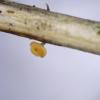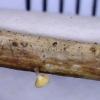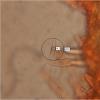
20-12-2025 23:08
Patrice TANCHAUDBonsoir, récolte sur sol sablonneux dans l'arri�

20-12-2025 15:47
Mirek GrycHi.These grew on pine wood that was heavily covere

18-12-2025 21:17
Pol DebaenstThe identification took me to Byssonectria deformi

15-12-2025 07:09
 Danny Newman
Danny Newman
indet. Rutstroemiaceae sp. on unk. fallen leavesMc

19-12-2025 10:10
Patrice TANCHAUDBonjour, récolte réalisée en milieu dunaire, a

18-12-2025 17:23
 Bruno Coué
Bruno Coué
Bonjour,je serais heureux d'avoir votre avis sur c

18-12-2025 18:07
Margot en Geert VullingsThese plumes were found on rotten wood.They strong

17-12-2025 18:35
 Michel Hairaud
Michel Hairaud
Bonjour à tous/Hi to everyone I am passing along
Hymenoscyphus ... possibly epiphyllus?
Alan Smith,
17-10-2017 22:55
Merci d'avance, Alan
Hans-Otto Baral,
18-10-2017 07:52

Re : Hymenoscyphus ... possibly epiphyllus?
Hi Alan
This is clearly Hymenoscyphus menthae (= H. consobrinus). You may consult my paper on this:
Hymenoscyphus menthae, H. macroguttatus and H. scutula, a
comparative taxonomic study emphasizing the value of spore
guttulation and croziers. Ascomycete.org, 7 (6) : 255-287. (2015)
Typical are the navicular multiguttulate, homopolar spores without a perceptible upper end.
This is a plurivorous species, like H. epiphyllus which differs in a consistently short stout stipe, and spores with large and small drops, also in having croziers at the ascus base.
Urtica and Rubus are very easily separated in a cross section. Urtica 4-angled with cavities in the xylem.
Zotto
This is clearly Hymenoscyphus menthae (= H. consobrinus). You may consult my paper on this:
Hymenoscyphus menthae, H. macroguttatus and H. scutula, a
comparative taxonomic study emphasizing the value of spore
guttulation and croziers. Ascomycete.org, 7 (6) : 255-287. (2015)
Typical are the navicular multiguttulate, homopolar spores without a perceptible upper end.
This is a plurivorous species, like H. epiphyllus which differs in a consistently short stout stipe, and spores with large and small drops, also in having croziers at the ascus base.
Urtica and Rubus are very easily separated in a cross section. Urtica 4-angled with cavities in the xylem.
Zotto
Alan Smith,
18-10-2017 16:19
Re : Hymenoscyphus ... possibly epiphyllus?
das ist sehr hilfreich, Zotto, danke





